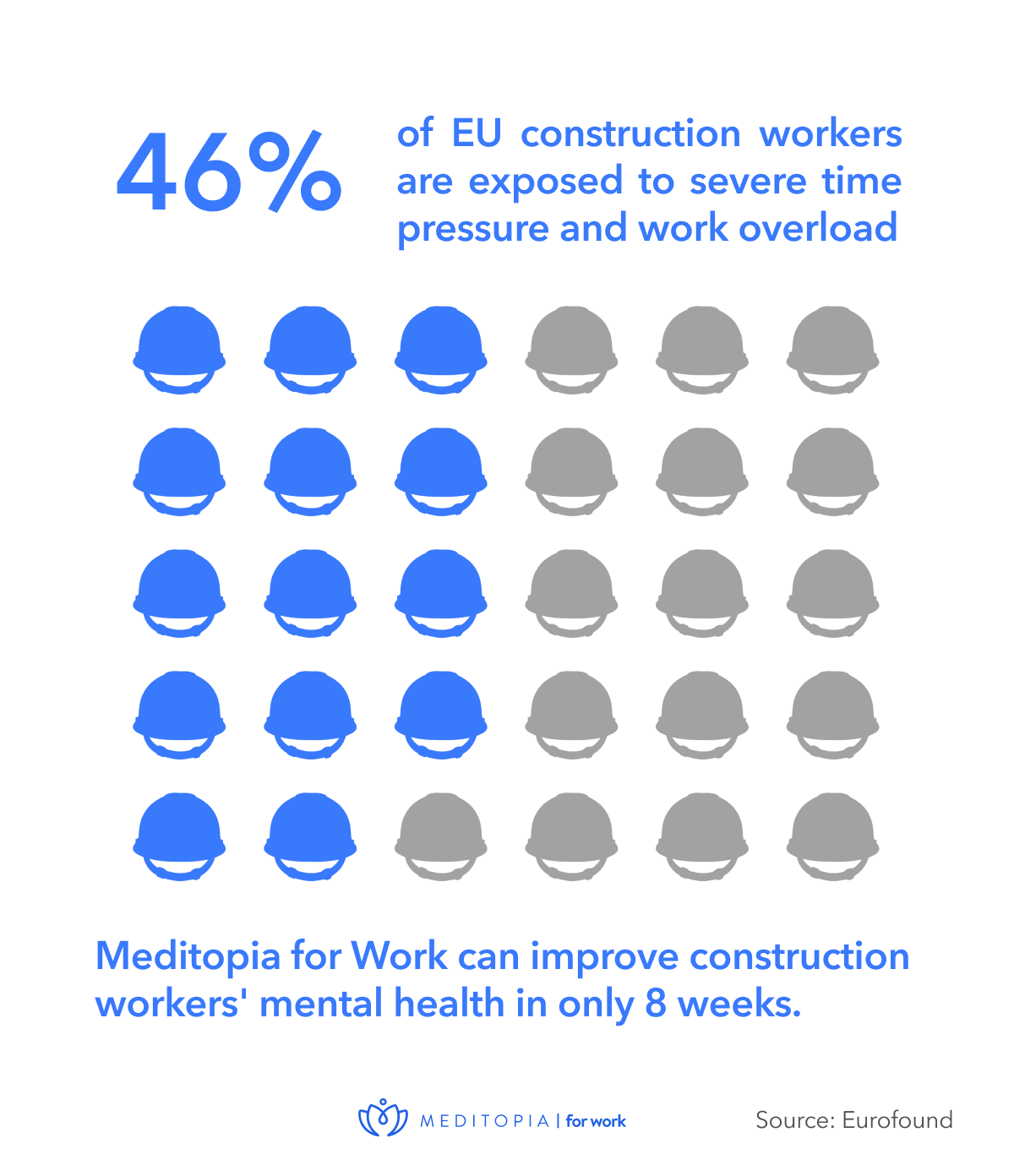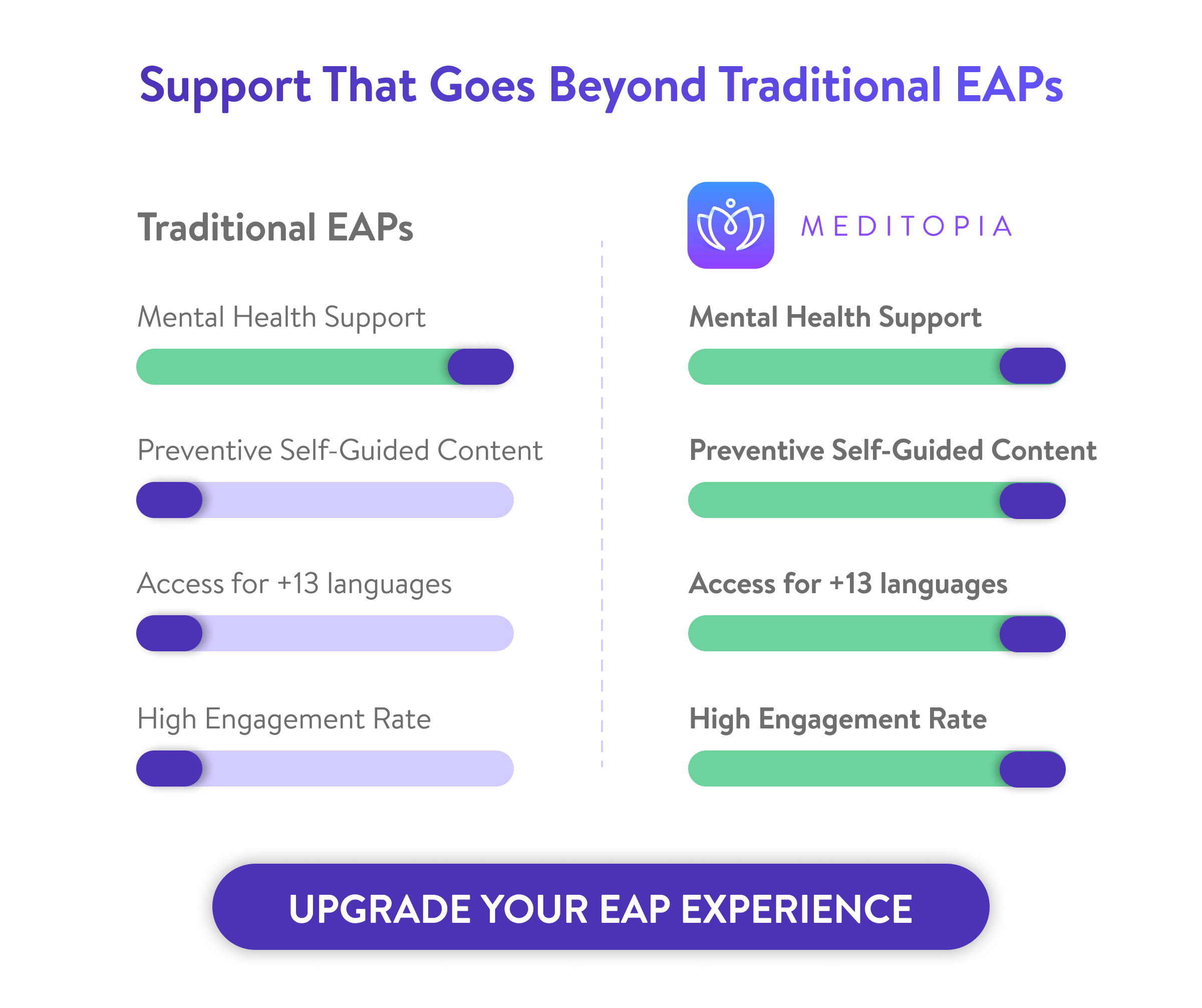The construction industry is facing a silent mental health crisis. In the EU alone, around 18 million construction workers are at risk of mental health issues, and 46% are exposed to severe time pressure and work overload [1]. The good news is that modern, digital EAP tailored to construction and field workers are quickly becoming a core workplace wellbeing and risk management tool. Let's check how they work and why they can change your workplace.
Why EAPs Matter in the Construction Industry
The gap between extreme psychosocial pressure and minimal help-seeking is exactly why a specialised eap for construction is essential: providing confidential, accessible, on-demand support that addresses the stress, trauma, fatigue, and stigma deeply emanibedded in construction and field work. Here are some challenges EAPs can help with:
- 73% of UK construction workers report mental health issues such as anxiety or depression at least once a month [2].
- Construction workers are also around four times more likely to die by suicide than the national average [3].
- In the UK construction industry, poor mental health costs at least £1.2 billion annually, with 5.1 million lost working days [4].
- For HR and safety professionals, a robust eap for construction and field workers addresses core issues: chronic stress, fatigue, trauma, stigma, isolation and job insecurity.

EAP Use Cases in Construction
Unlike generic programmes, an effective eap in construction like Meditopia for Work supports workers through burnout, injuries, conflict, isolation, and critical incidents. When delivered as a mobile-ready, accessible eap for construction and field workers, it becomes a practical tool crews actually use during demanding phases of a project.
Key Benefits of EAPs for Construction Companies
Let's discover how these mental health programs for work can change the landscape for construction companies, regarding employee wellbeing, productivity, and retention levels.
- Companies that offer an EAP see employees taking fewer sick days, because workers get help earlier. One study found EAP users lost 4.8–6.5% fewer work hours each month due to health issues [5].
- EAP users also show better focus and fewer on-the-job performance problems, meaning less presenteeism.
- A 2025 study of more than 15,000 employees found that people with access to EAP support were significantly less likely to consider leaving their job [6].
- Users report feeling better emotionally, with reductions in stress, anxiety and depression.
- Global reviews show companies save $3–$10 for every $1 spent, thanks to fewer absences and better performance.
- Workers in high-risk, male-dominated sectors including construction show significant reductions in stress, anxiety, and depression after using EAP counselling services.

How to Implement an EAP in a Construction Organization
Here are the basic steps to start the implementation of a wellbeing program at work. If it feels like too much, don't worry. Contact Meditopia and we will take care of it all for you!
- Assess wellbeing needs:
- Gather data from incident reports, absenteeism records, employee surveys, and supervisor feedback to understand the main stressors affecting construction and field workers (e.g., fatigue, financial strain, isolation, conflict, trauma after incidents).
- Choose the right EAP provider:
- Evaluate whether a traditional model or a digital, mobile-first solution fits your workforce.
- Prioritize providers that understand construction environments, offer short-term counselling, provide multilingual support, and deliver self-guided tools.
- Meditopia for Work can help your workforce with its 45% engagement rate, gamification features, 14 languages, and 1-1 expert sessions on demand.
- Communicate the program clearly:
- Introduce the EAP during site inductions, toolbox talks, notice boards, and shift briefings.
- Use simple language that explains what the EAP does, how to access it, and that it is confidential.
- If you need support on this matter, we can craft compelling comunications explaining how Meditopia's EAP work to your workforce, and improve their engagement.
- Enable managers and supervisors to signpost support:
- Give foremen and site leads basic training so they can identify stress, fatigue, or behavioural changes and direct workers to the EAP without trying to “fix” the issue themselves.
- Track engagement and outcomes:
- Review anonymized analytics (usage rates, topics, preferred channels) to monitor whether the program is reaching site teams.
- Compare trends with absenteeism, turnover, and safety indicators.
- Review anonymized analytics (usage rates, topics, preferred channels) to monitor whether the program is reaching site teams.
- Continuously refine the approach:
- Adjust communication, add targeted campaigns (e.g., sleep, stress, financial wellbeing), refresh manager training, and ensure the EAP stays aligned with evolving project needs and workforce realities.
Why EAPs Matter for Construction: Comparison with Other Industries
These types of employee wellness tools work differently for each industry. Since each niche has its own challenges, the solutions will match them. Below is a small comparative table you will find useful:














.jpg)










